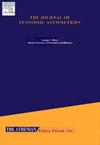The impact of the Covid-19 pandemic on gender labor market asymmetries in Germany
Q1 Economics, Econometrics and Finance
引用次数: 0
Abstract
The Corona pandemic affected life and working conditions around the world. Some could work from home, some had to risk their lives at the workplace, and some got laid off. The selection of employees to one of these groups, however, was asymmetric about gender. More than 63 percent of employees providing services in Germany are female; females in health professions account for more than 75 percent, and in social professions, including daycare, the share of female employees is at 84 percent. These occupations were in high demand during the pandemic and cannot be practiced at home. Since women do more than 62 percent of housework and childcare, the high demand for female work creates a dilemma. While family obligations increased as childcare facilities and schools closed, women had to decide whether to remain or drop out of the labor market. In this paper’s estimated DSGE model, these choices are addressed by allowing for asymmetries in participation decisions and disutility of effort for male and female workers. While at the beginning of the pandemic, female employment increased relative to male, an increase in disutility drove females out of the labor market during the second lockdown. Instead, predominantly males entered, and females reacted to this increase by staying absent. This pattern resembles previous findings on historical pandemics and, in the literature, is called “the added worker effect.”
新冠肺炎疫情对德国性别劳动力市场不对称的影响
冠状病毒大流行影响了世界各地的生活和工作条件。有些人可以在家工作,有些人不得不在工作场所冒着生命危险,还有一些人被解雇了。然而,其中一个群体的员工选择在性别上是不对称的。在德国,提供服务的员工中有63%以上是女性;从事保健工作的女性占75%以上,而在包括日托在内的社会职业中,女性雇员的比例为84%。这些职业在大流行期间需求量很大,无法在家从事。由于女性承担了超过62%的家务和育儿工作,对女性工作的高需求造成了一种两难局面。随着托儿设施和学校的关闭,家庭义务增加,女性不得不决定是继续留在劳动力市场还是退出。在本文估计的DSGE模型中,这些选择是通过允许男性和女性工人参与决策的不对称和努力的负效用来解决的。虽然在大流行开始时,女性就业人数相对于男性有所增加,但在第二次封锁期间,负效用的增加迫使女性退出了劳动力市场。取而代之的是,主要是男性进入,而女性对这种增加的反应是缺席。这种模式类似于以前对历史流行病的发现,在文献中被称为“额外的工人效应”。
本文章由计算机程序翻译,如有差异,请以英文原文为准。
求助全文
约1分钟内获得全文
求助全文
来源期刊

Journal of Economic Asymmetries
Economics, Econometrics and Finance-Economics, Econometrics and Finance (all)
CiteScore
4.80
自引率
0.00%
发文量
42
审稿时长
50 days
 求助内容:
求助内容: 应助结果提醒方式:
应助结果提醒方式:


